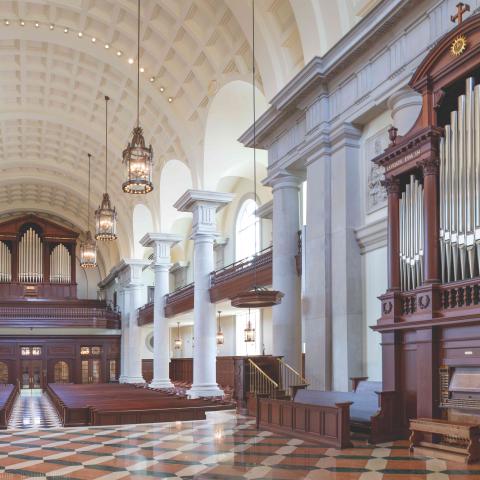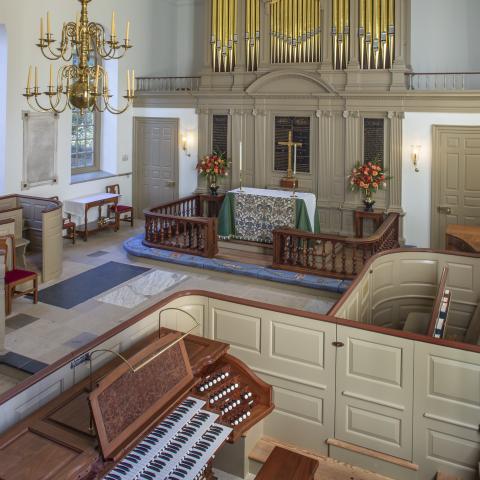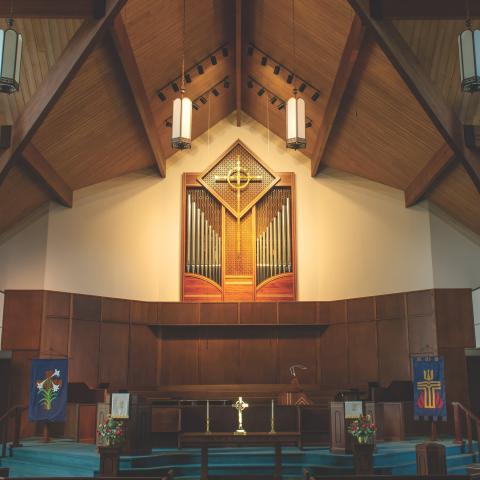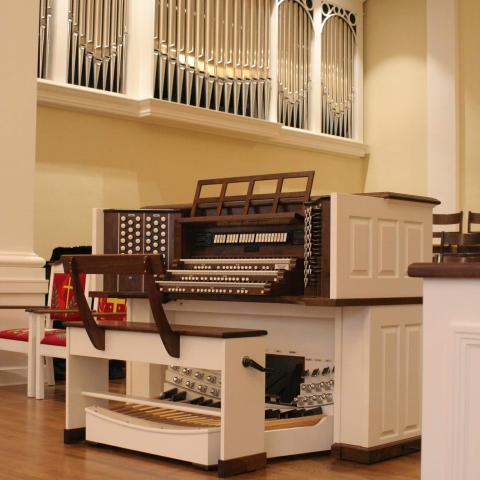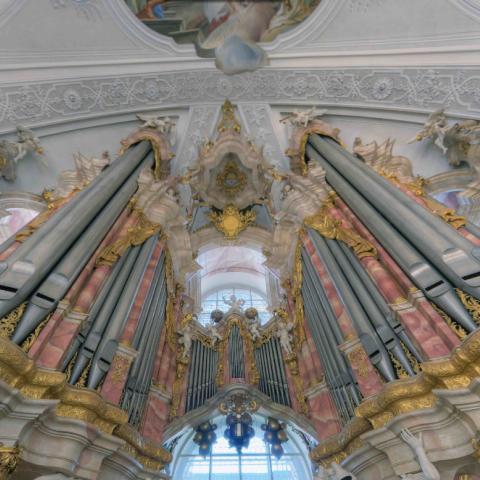Lee T. Lovallo Pipe Organs, Antelope, California
Renaissance Choir Sacramento, Sacramento, California
Designed to support rehearsals and performances of a community ensemble that specializes in fifeenth- and sixteenth-century sacred music, the range of this portable organ mirrors that of most early choral music, EE—g2, with extensions for the playing of early organ literature. The single manual is fully transposable at A = 415Hz and 440Hz. Transparently voiced, with racking above the pipe mouths, low wind pressure, and with its divided keyboard, the organ suggests early Italian practice, particularly when tuned in a meantone temperament.
Key and stop action is mechanical. A silent blower is found in the base, which can be detached from the top for moving. The cabinet is of American cherry with rosewood accents. The keyboard naturals are covered in bone, while the sharps are of rosewood. The Gedackt is of African mahogany with revoiced spotted metal pipes for the Principale. Design, cabinetry, action, and pipework are by Lee Lovallo. Paul Dessau made the keyboard and pallets.
The instrument was first used in choral and keyboard performances of music by Thomas Tallis at the Sisters of Mercy Convent, Auburn, California, in May 2018.
—Lee T. Lovallo
MANUAL
8′ Gedackt
4′ Principale (TC, divided b/c1)
Manual compass 44 notes, C,D,E–a2
Builder’s website: http://lovallo.org/
Renaissance Choir Sacramento website: http://renaissancechoirsacramento.com

